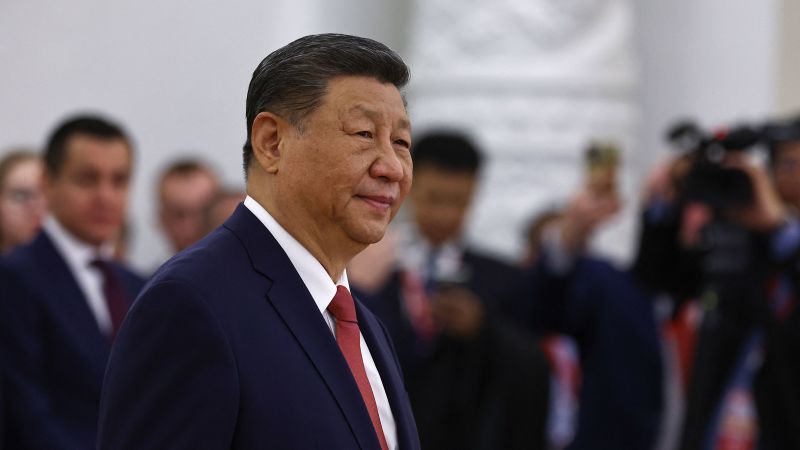
The Unprecedented Absence: Xi Jinping’s Missing Presence at the BRICS Summit
The BRICS summit in Rio de Janeiro is underway, yet it’s missing a key player: Xi Jinping, the leader of China, the most influential member of the bloc. This marks the first time in over a decade that Xi has skipped the annual gathering, sparking curiosity and speculation about the group’s future. The absence is significant, especially given Xi’s efforts to position BRICS as a cornerstone in reshaping the global power balance. Why would the leader of the world’s second-largest economy, a nation heavily invested in BRICS, choose to abstain from such a critical summit? This decision raises questions about China’s strategic priorities and the evolving dynamics within the BRICS framework. The absence of Xi Jinping has certainly cast a long shadow over the proceedings, inviting a closer look at the summit’s objectives and the challenges BRICS faces in an increasingly complex world.
The Expanding BRICS: New Members and Rising Influence
BRICS, originally an acronym for Brazil, Russia, India, China, and South Africa, has broadened its scope. In 2024, the group welcomed new members including Egypt, the United Arab Emirates, Ethiopia, Indonesia, and Iran. This expansion signals a broader ambition to increase influence on the global stage. What impact will these new members have on the group’s cohesion and direction? The expansion reflects a global shift, with nations seeking alternatives to the established Western-led order. However, this growth also presents challenges. These diverse nations have varying political and economic systems, which might lead to internal tensions and disagreements. The inclusion of new members like Indonesia and Iran, who have their own regional and global agendas, will add complexity to the bloc’s decision-making processes. The summit will likely be a test of BRICS’ ability to act as a unified front, as they navigate intricate geopolitical and economic waters.
Geopolitical Implications: China’s Strategic Moves and Global Power
Xi Jinping’s absence is a significant development, offering insight into China’s strategic calculus. It raises questions about Beijing’s priorities and how it views its role in the global order. Some experts believe that China’s strategic focus might be shifting, particularly given the economic challenges it faces at home. This could be a chance for China to take a step back and re-evaluate. Why might China choose this moment to adjust its approach? The reasons could be multifaceted. There’s the economic turbulence and the need to navigate tensions with the United States. China may be reevaluating its approach and focusing on domestic matters. This adjustment could involve recalibrating its strategy within BRICS, seeking greater efficiency, or pursuing alternative paths. The summit provides a platform for China to signal its commitments to global cooperation, even if its leader is absent. It will be interesting to see how China, represented by Li Qiang, navigates these complex dynamics.
Key Issues at the Summit: Trade, Currency, and De-Dollarization
The Rio de Janeiro summit will grapple with pressing global issues, including trade, finance, and the future of the international monetary system. One of the key topics is the push to reduce dependence on the U.S. dollar in international trade and finance. This move is particularly attractive to member countries like Russia and Iran, which face strong sanctions from the U.S. What are the implications of this shift? The goal is to explore other payment options to reduce the risks and expenses associated with the U.S. dollar. Russia has been pushing for a unique cross-border payment system. However, one idea that won’t be on the table is the creation of a “BRICS currency.” The US President, Donald Trump, has said that he’ll impose tariffs on “hostile” BRICS countries if they support another currency to replace the “U.S. Dollar.” The summit, therefore, will be a testing ground for the bloc’s resolve to push for a multipolar world, where power is more distributed, and where the U.S. dollar does not have a dominant influence.
Challenges and the Future of BRICS: A Critical Juncture
BRICS faces a multitude of challenges. The group’s expansion has led to differing viewpoints among the member states. The varied interests and political landscapes of its members create internal tension. While the group aims to present a unified front, contrasting viewpoints often hamper this objective. The summit will be a pivotal moment. Will the group overcome internal divisions to assert its influence? Or will the growing pains of expansion and varying strategic priorities undermine its ability to achieve common goals? The success of the summit hinges on whether BRICS can address the challenges effectively and create a unified approach. The summit is a crucial moment, defining the group’s trajectory and its influence on the global stage. As the leaders gather in Rio, the world watches closely, eager to understand the future of this significant global alliance.
Conclusion: Navigating Uncertainty and Shaping the Future
The BRICS summit in Brazil marks a defining moment for the alliance, occurring during a time of global upheaval and uncertainty. Xi Jinping’s absence, along with the expanded membership and geopolitical tensions, underscores the complex challenges ahead. While the summit’s agenda includes key issues like trade, currency, and de-dollarization, internal divisions and varying national priorities could pose significant hurdles. As the BRICS nations navigate these waters, the world will be watching closely, eager to see how the group can shape the global landscape, and whether it can effectively present a united front in the face of the challenges. The success of BRICS in Rio de Janeiro will be a sign of its potential for future growth and impact, determining its role in a world increasingly seeking alternative models of global cooperation and influence.